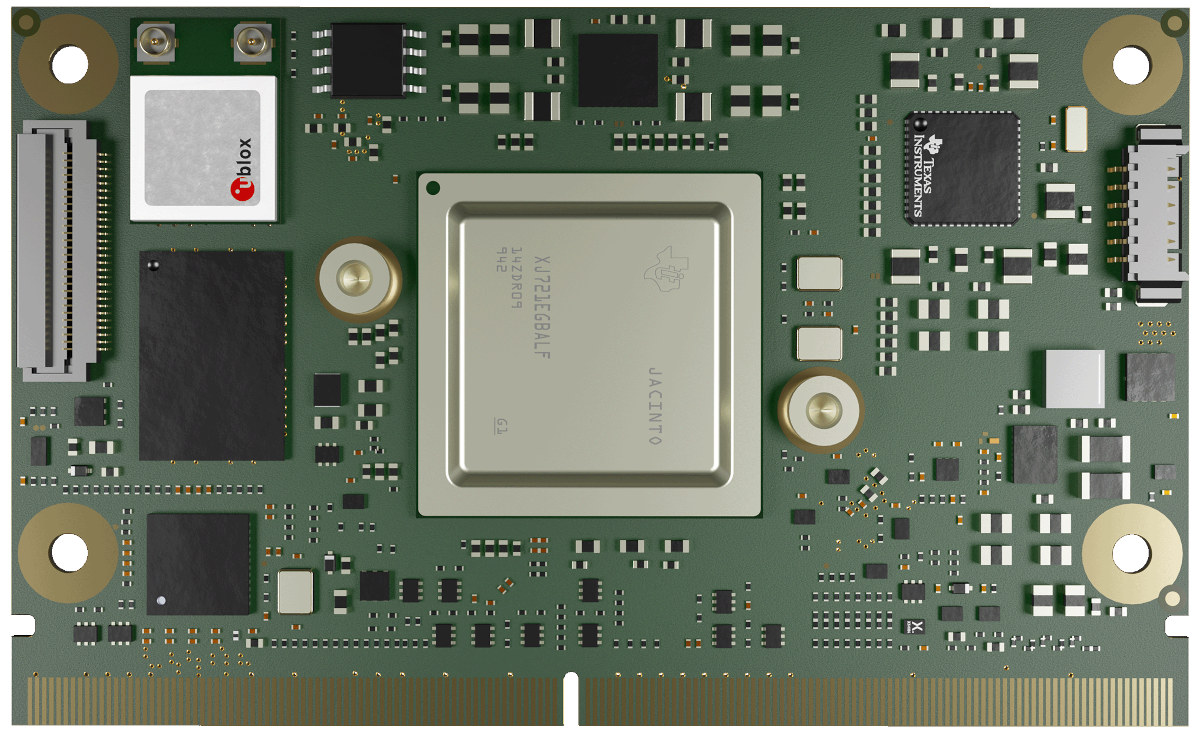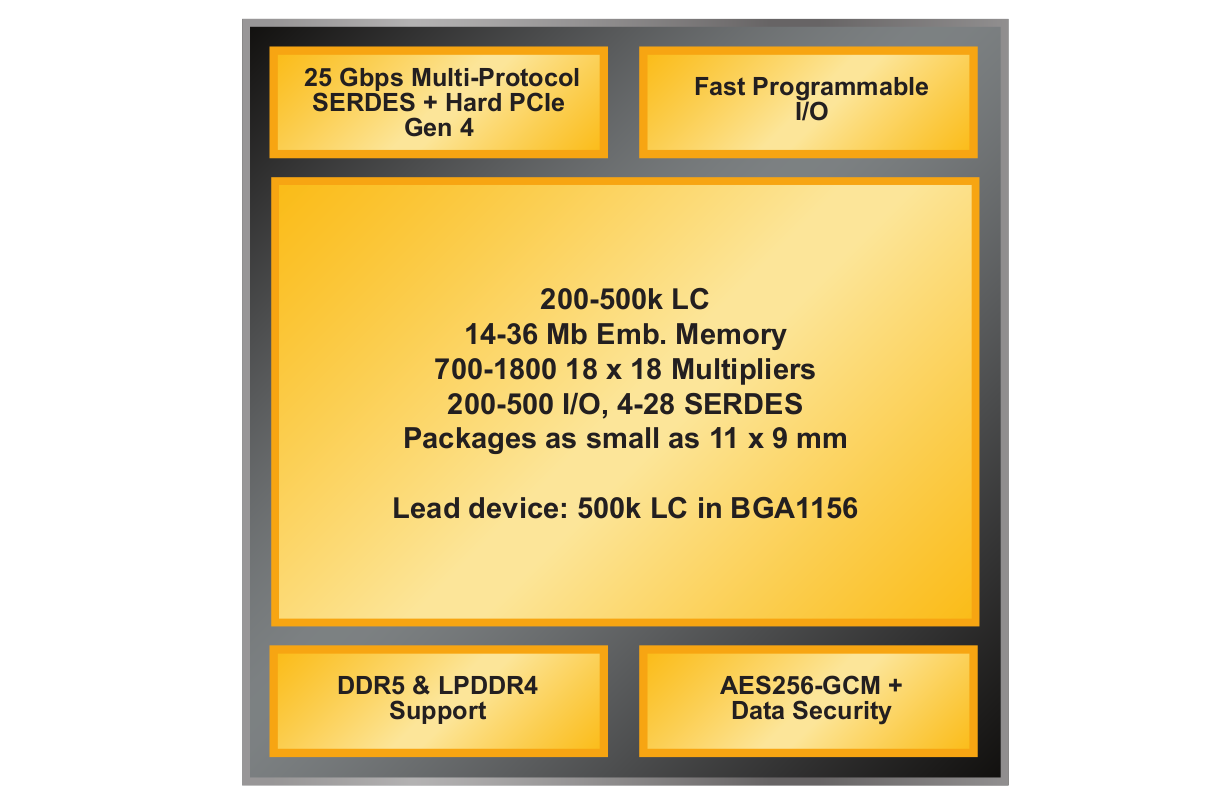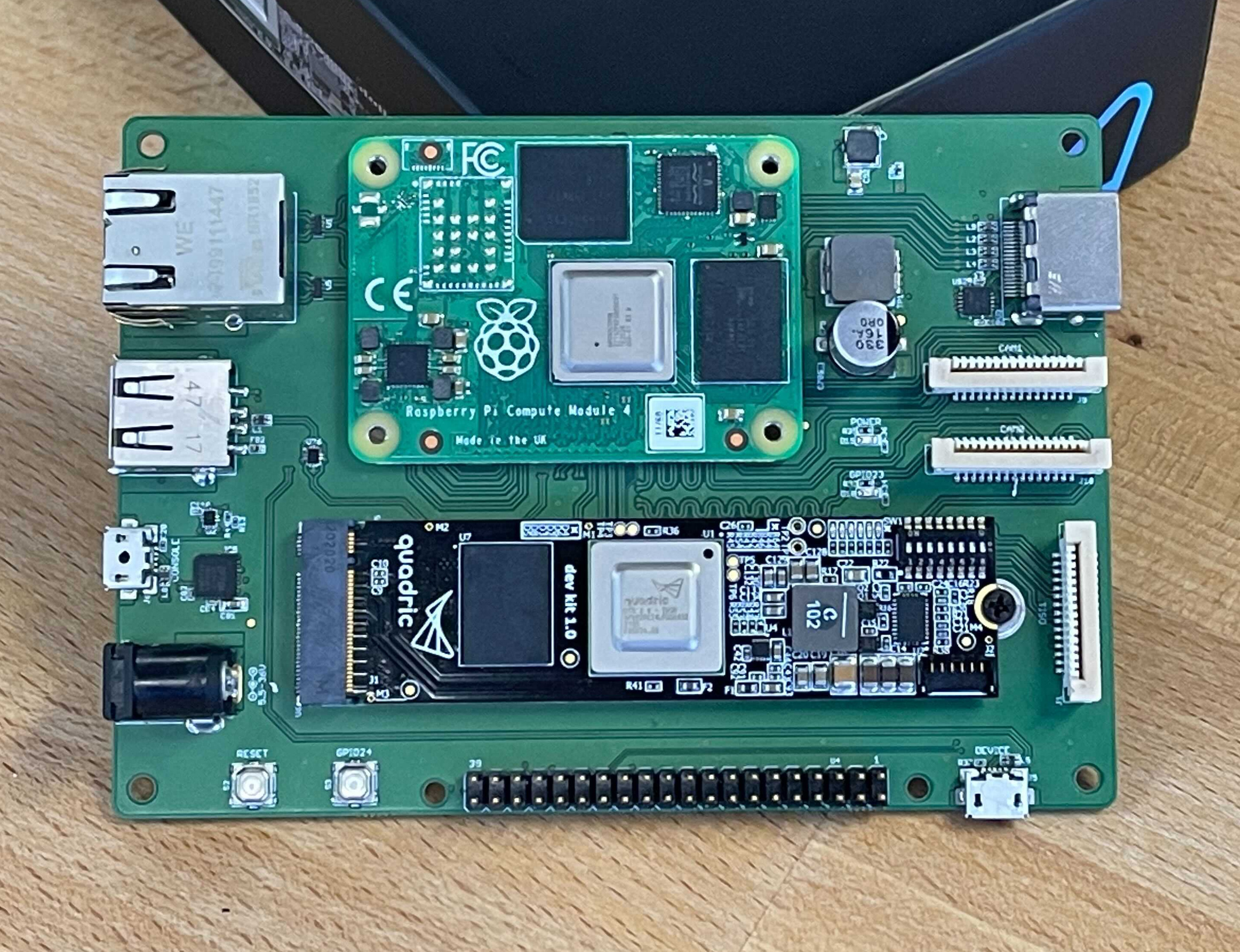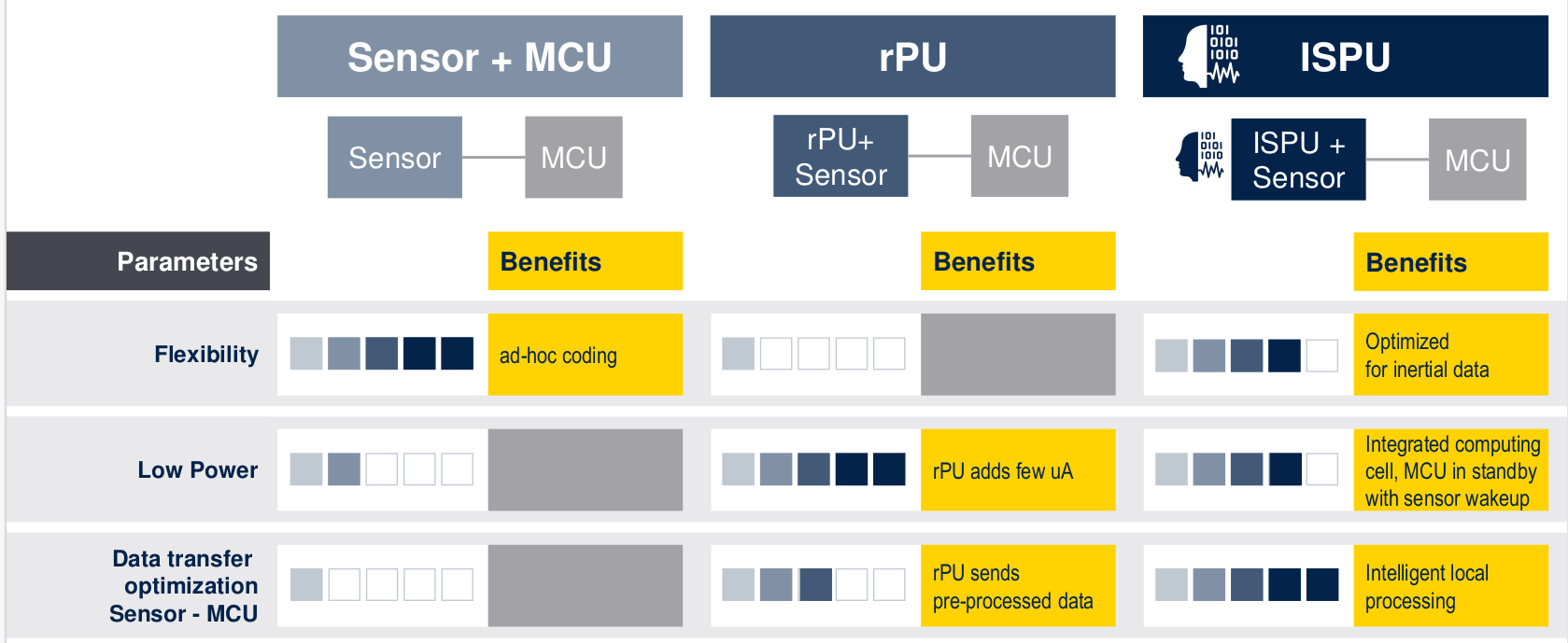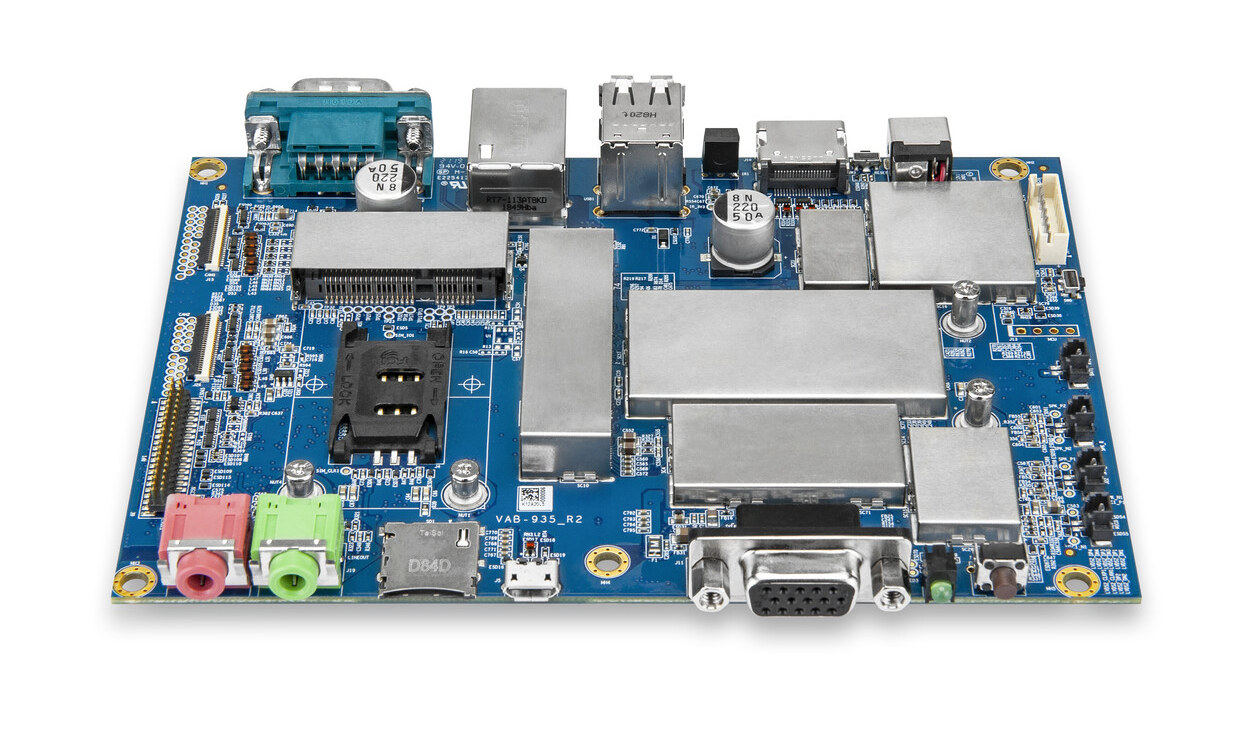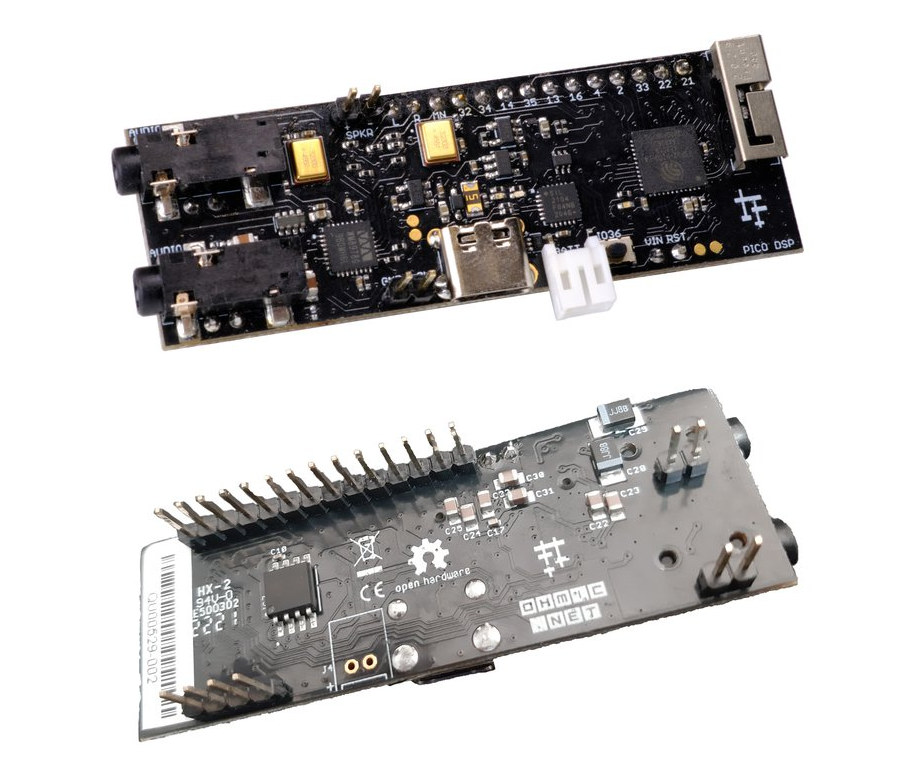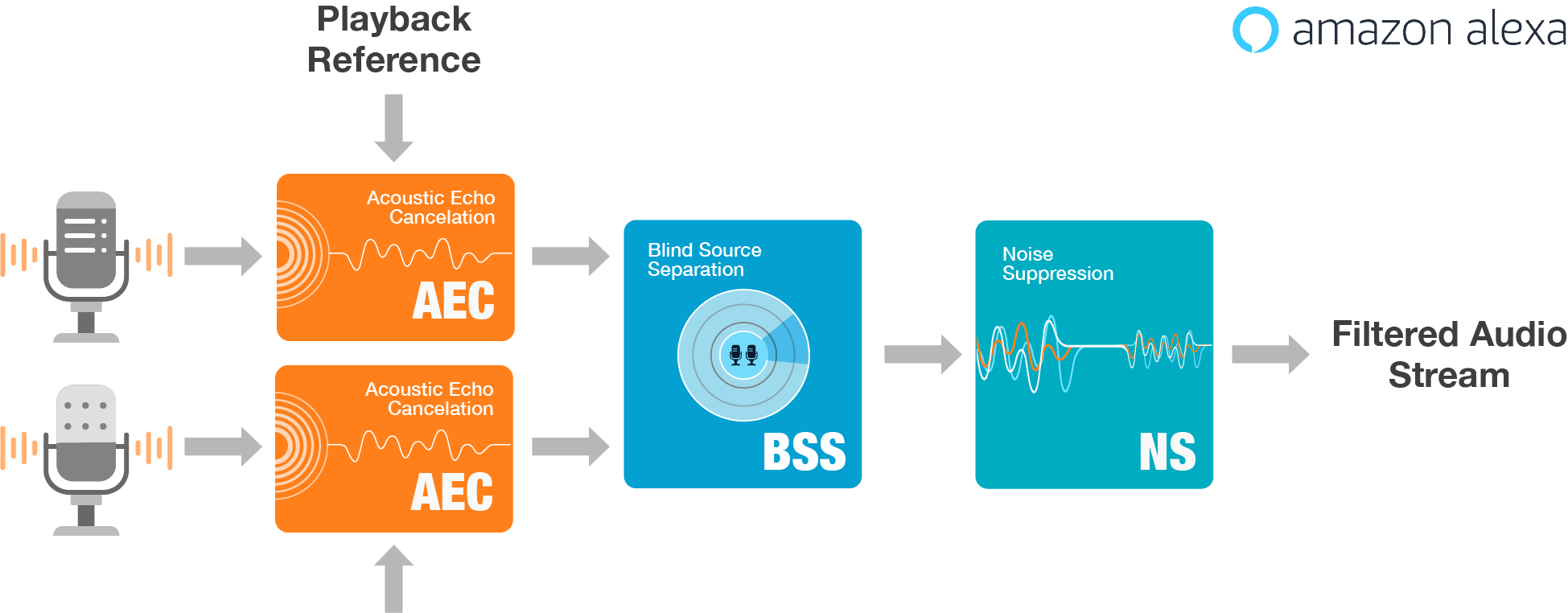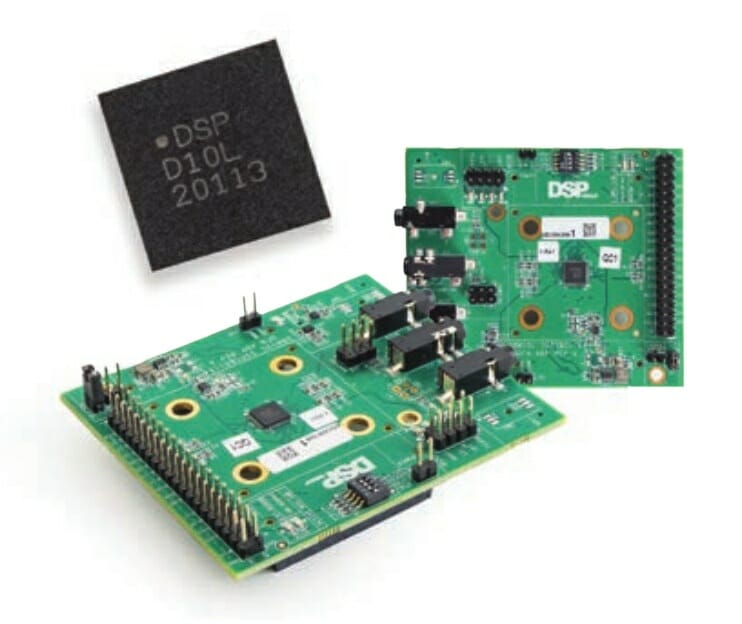congatec conga-STDA4 is a SMARC Computer-on-Module (CoM) based on Texas Instruments TDA4VM or DRA829J Jacinto 7 processor with two Cortex-A72 cores, six real-time Cortex-R5 cores for functional safety, accelerated vision and AI processing capabilities, and plenty of interfaces. The first Texas Instruments-powered CoM from the company is designed for industrial mobile machinery requiring near-field analytics, such as automated guided vehicles and autonomous mobile robots, construction and agricultural machinery, as well as any industrial or medical solutions requiring energy-efficient computer vision at the edge. conga-STDA4 specifications: SoC – Texas Instruments Jacinto 7 TDA4VM/DRA829J with Dual-core Arm Cortex-A72 up to 2.0 GHz 6x Arm Cortex-R5F cores @ 1.0 GHz up to 8 MB of on-chip L3 RAM 1x C7x DSP up to 80 GFLOPs 2x C66 DSPs up to 40 GFLOPs Up to 8 TOPS MMA AI accelerator PowerVR Rogue 8XE GE8430 3D GPU with support for OpenGL ES 3.1, OpenVX, OpenCL […]
Lattice Avant mid-range FPGA platform features up to 500K logic cells, 25 Gbps SERDES, Hard PCIe Gen4
Lattice Avant is a new low-power and small form factor mid-range FPGA platform, manufactured with a 16nm FinFET process, and equipped with 25 Gb/s SERDES, hardened PCI Express, external memory PHY interfaces, a high DSP count, and a security engine. Lattice Semi is better known for its entry-level FPGAs such as the iCE40 which is popular in the community thanks to low-cost hardware and support for open-source tools, but the Avant platform marks the company’s entry into the mid-range FPGA market, defined by chips with 100k to 500k logic cells (LCs). Lattice Avant highlights: FPGA fabric – 200K to 500K logic cells up to 350 MHz DSP – 700 to 1,8000 18×18 multipliers @ up to 650 MHz to support the latest AI algorithms Memory 14-36 Mbit embedded memory up to 650 MHz DDR3L/DDR4/LPDDR4 and DDR5 support I/Os 4x to 28x 25 Gbps multi-protocol SERDES Hard PCIe Gen4 200 to […]
Quadric devkit features q16 hybrid AI, DSP, computer vision accelerator
The Quadric devkit is an M.2 Key M module equipped with the company’s q16 edge processor offering a hybrid data-flow + Von Neumann machine for not only neural networks, but also computer vision, digital signal processing, BLAS (Basic Linear Algebra Subprograms), and other workloads. This architecture allows the Quadric q16 to be more flexible than traditional AI accelerators and can deliver more effective solutions for heterogonous systems that may have multiple accelerators or require a powerful processor. The M.2 form factor enables easy integration into boards with an M.2 Key M socket such as the Gumstix Raspberry Pi 4 development board shown below with the Quadric devkit. Quadric devkit specifications: Accelerator – Quadric q16x4 Processor with 256 Vortex Cores, 8 MB on-chip memory, 4 kB per core memory, multi-precision multiply accumulate; 16 x 16mm package Memory – 4GB LPDDR4, 32-bit, dual-rank up to 3677 MHz Host Interface – 2-lane PCIe […]
STMicro Intelligent Sensor Processing Unit (ISPU) combines MEMS sensor with DSP for AI “in the edge”
STMicroelectronics’ Intelligent Sensor Processing Unit (ISPU) is a single chip that combines a MEMS sensor together with a Digital Signal Processor (DSP) designed to run AI algorithms to let the chip make electronic decisions “in the edge” without help from the cloud or a local gateway. The ISPU is said to offer a smaller size compared to system-in-package devices, cut power consumption by up to 80%, and according to STMicro, launch the new “Onlife era” following the “Offline era” of the 2000’s where sensors were controlled by MCUs without network connectivity and the “Online era” in the 2010’s when sensors became connected to the cloud or a local gateway. ISPU key features: Enhanced 32-bit RISC Harvard architecture Extensible at the chip design phase with dedicated instructions or HW components Frequency / ODR (Output Data Rate) max – 5 MHz / 3.33 kHz – 10 MHz / 6.66kHz Four-stage pipeline 16-bit […]
VIA SOM-9X35 Starter Kit features MediaTek i350 Arm processor for edge AI devices
VIA has just introduced the SOM-9X35 Starter Kit based on MediaTek i350 quad-core Cortex-A53 processor with AI accelerator and HiFi4 DSP designed for Edge AI devices in the retail, commercial, and industrial sectors. The kit is comprised of the SOM-9X35 module with MediaTek i350 SoC, up to 4GB RAM, 16GB eMMC flash, and WiFI 5 + Bluetooth 5.0 wireless module, as well as the VIA VAB-935 3.5-inch carrier board, a 7-inch 1024×600 touch panel display, a 13MP camera module, two speakers and microphone, and accompanying accessories. VIA SOM-9X35 Starter Kit specifications: SOM-9X35 System-on-Module SoC – MediaTek i350 (MT8365) quad-core Arm Cortex-A53 processor @ up to 2.0 GHz, Arm Mali-G52 MC1 up to 800Mhz with support for OpenGL ES, OpenCL, and Vulkan APIs, MediaTek APU 1.0 AI Processor up to 500MHz (285 GMACs), HiFi4 DSP System Memory – 2GB LPDDR4 SDRAM (1GB/4GB optional) Storage – 16GB eMMC flash Connectivity – MediaTek […]
PICO DSP is an Arduino compatible ESP32 development board for audio and DSP applications (Crowdfunding)
ESP32 audio development boards have been around ever since ESP32 boards were introduced starting with Espressif Systems’ own “ESP32-LyraTD-MSC Audio Mic HDK“, and now ESP32 hardware and software have been certified for Amazon Alexa Voice Services. PICO DSP is another ESP32 development board for audio and digital signage processing (DSP) applications. Equipped with a Wolfson WM9878 stereo audio codec, the breadboard-friendly, Arduino compatible board includes two MEMS microphones, audio in and out jacks, a speaker header, plus other audio signals routed to a GPIO header. PICO DSP specifications: SiP – Espressif ESP32-PICO-D4 system-in-package with ESP32 dual-core WiFi 4 & BLE processor, 4MB SPI flash External storage/memory Original Edition – External 64 MB pseudo-static (PSRAM) chip, of which up to 8 MB is currently supported by ESP-IDF. Strawberry Edition – 16 MB of external NOR flash (note: the internal 4MB SPI flash will not be usable after selecting the NOR flash […]
Amazon Alexa certified ESP AFE leverages ESP32-S3 AI & DSP instructions
While most Amazon Alexa certified products are hardware designs, Amazon website also includes a Software Audio Front End (AFE) Dev Kits section that lists software algorithms that optimize audio detection in noisy environments, and the latest addition is Espressif’s Audio Front-End algorithms, or ESP AFE for shorts, that have recently been qualified for Amazon Alexa devices. It’s not the first Alexa certified solution from Espressif Systems, as both companies have worked together in the past with audio products like the ESP32-PICO-V3-ZERO Alexa Connect Kit Module or ESP32-Vaquita-DSPG board The algorithms were created by Espressif’s AI Lab team who used the AI and DSP instructions inside ESP32-S3 processor to optimize the code. The algorithms only utilized 12 to 20% of the CPU, as well as 220 KB of internal and 240 KB of external memory, leaving extra resources for other applications running in the wireless SoC. The ESP AFE is said […]
DBM10 AI SoC is optimized for battery-powered voice and sensor processing
DSP Group announced DBM10 a low-power AI/ML-enabled dual-core SoC. The SoC is equipped with a DSP (Digital Signal Processor) and a dedicated nNetLite NN (Neural Network) processor that improves voice and sensor processing and ensures low-power consumption when working with sufficient-sized neural networks. Key Specifications of NN Processor Form factor: ~4 mm2 Ultra-low-power inference consumption – ~500 µW (typical) for voice NN algorithms Runs Hello Edge 30-word detection model @ 1 MHz (125 MHz available) Allows porting of large models (10s of megabytes) without significant accuracy loss using model optimization and compression. DBM10 AI SoC uses the combined functioning of machine learning, voice, and sensor parameters. This includes voice trigger (VT), voice authentication (VA), voice command (VC), noise reduction (NR), acoustic echo cancellation (AEC), sound event detection (SED), proximity and gesture detection, sensor data processing, and equalization. The DBM10 is suitable for battery-operated devices like smartphones, tablets, and wearables. It […]


